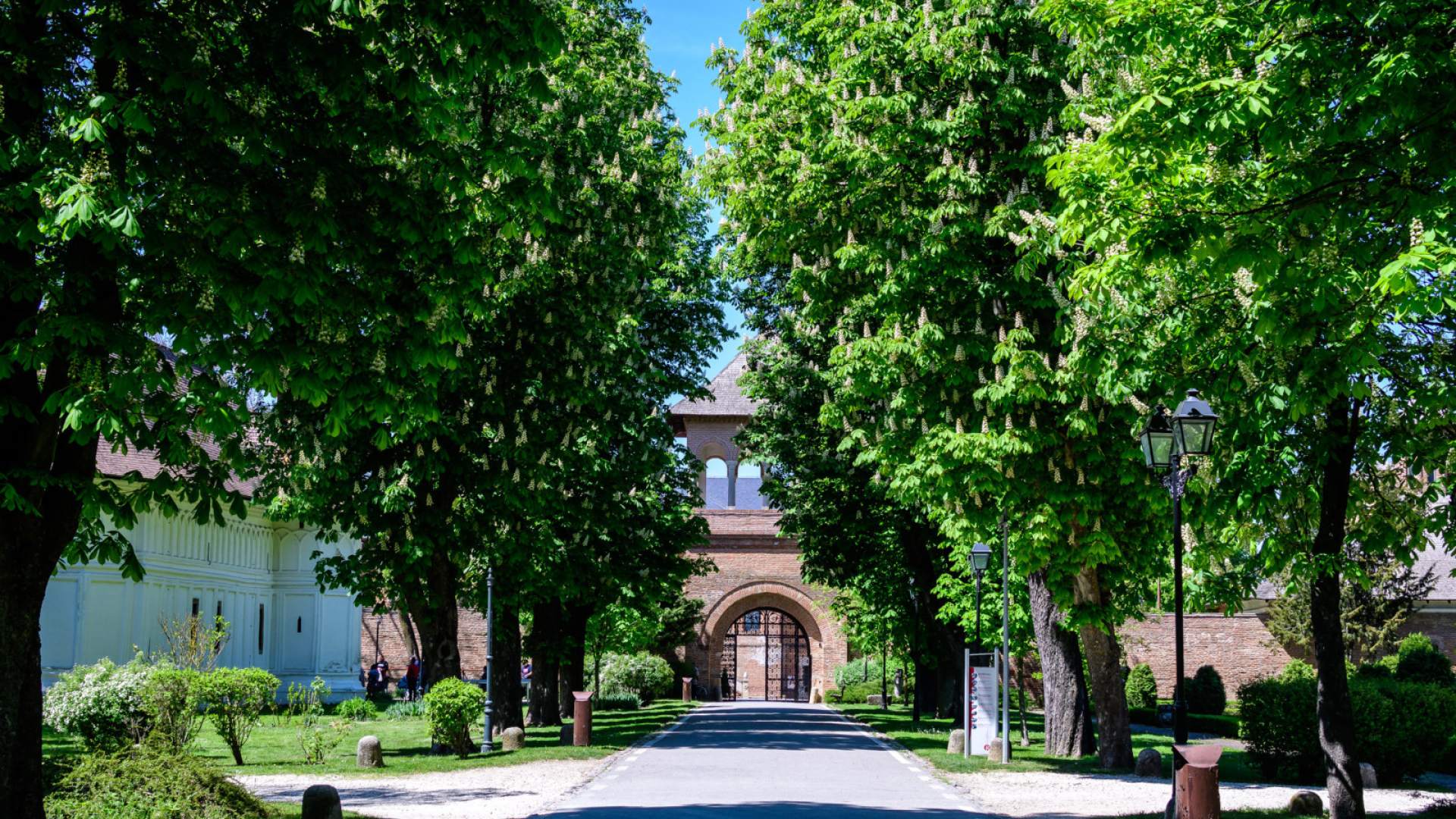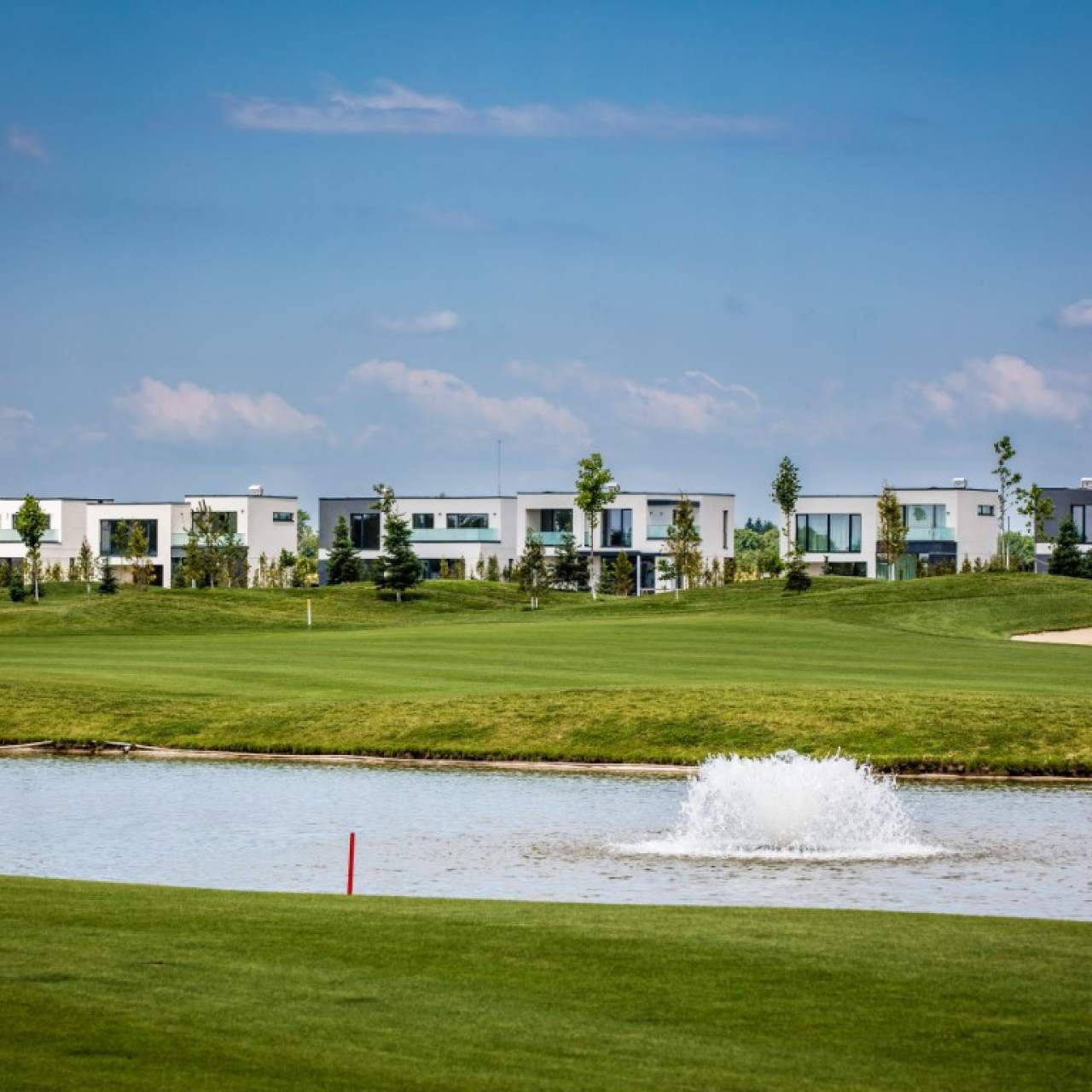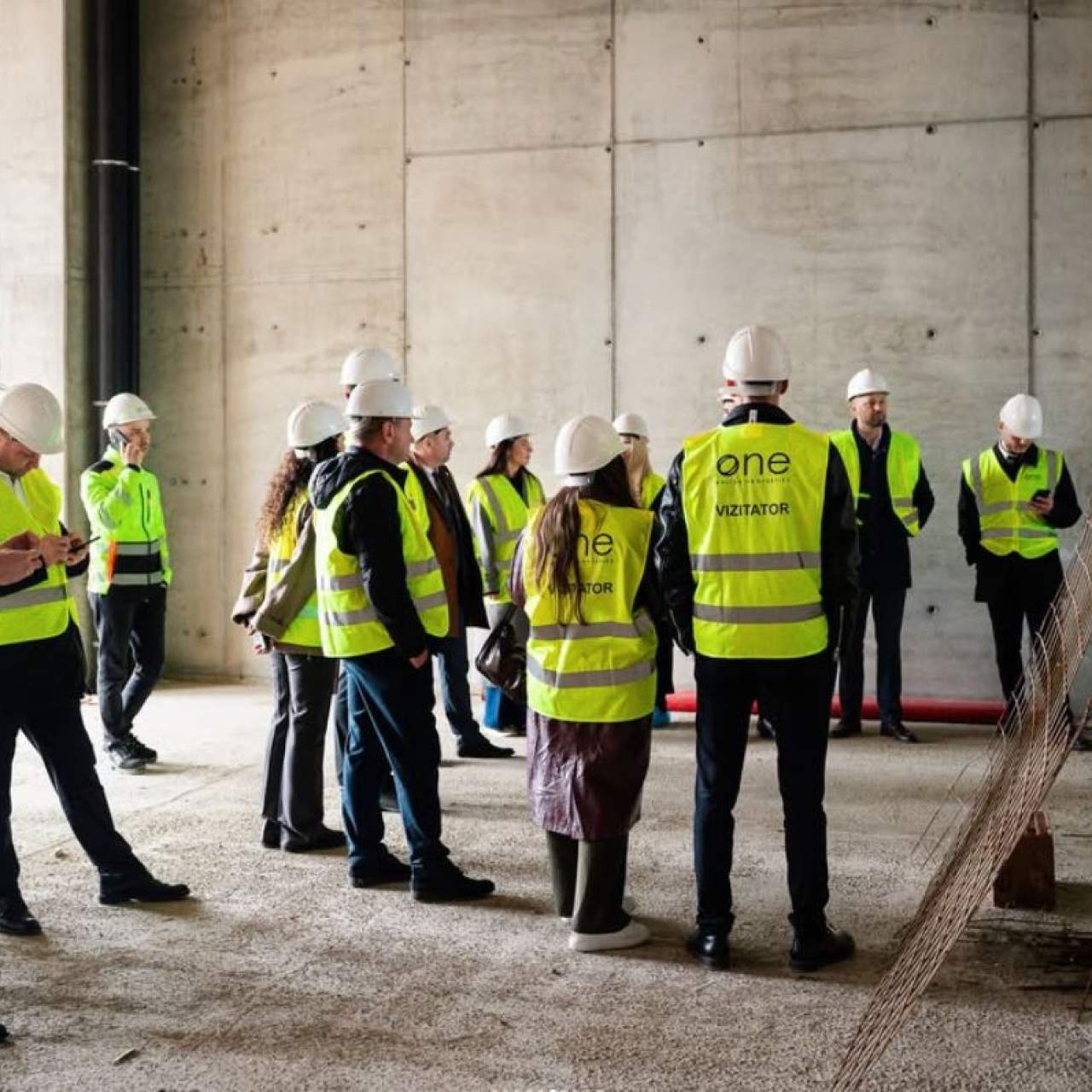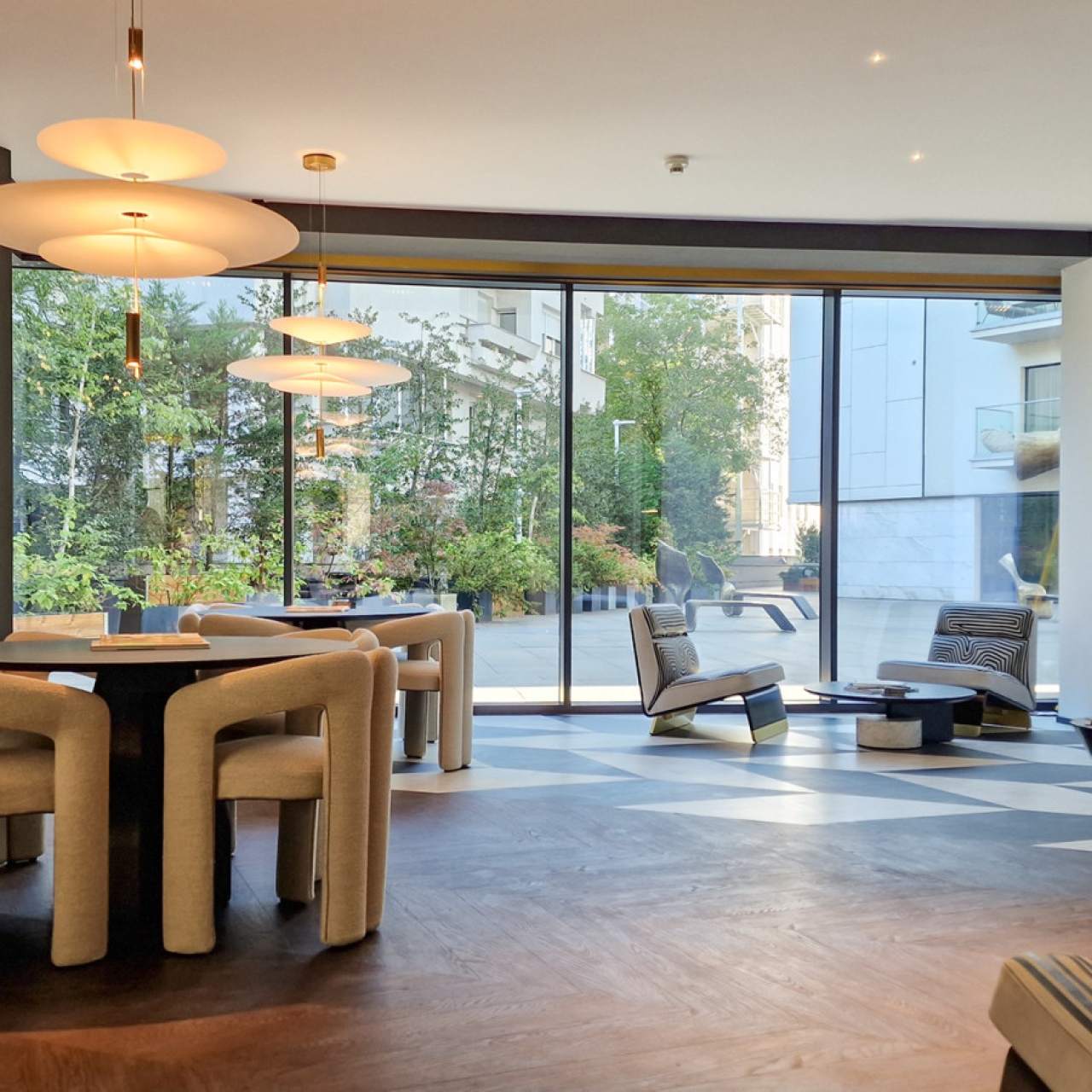
Sightseeing near Bucharest
Although at first sight, it might seem that Bucharest is not surrounded by many tourist attractions, on a closer look we will discover near the city many objectives with fascinating stories that date back hundreds of years.
Here are the most popular.
Mogoșoaia Palace
The construction of the Mogoșoaia palace was started at the command of the ruler Constantin Brâncoveanu, on a plot of land he had bought in 1681. The works were completed in the autumn of 1702. The building had been designed in Brâncoveanu style, also borrowing Venetian and Ottoman elements. In parallel with the actual residence, which housed the family rooms upstaires, and those of the servants on the ground floor, in the royal ensemble were arranged an inner courtyard, a kitchen with four ventilation towers, a guest house, a glacier, a flower greenhouse, the Gate Tower, as well as a tomb for family members, while a church was built in the palace park.
In 1714, after the execution of the ruler and his family, the palace would function as an inn, until the ruler Stefan Cantacuzino managed to recover it and return it to the descendants of Constantin Brâncoveanu.
Over time, the palace was severely damaged several times during various armed conflicts. In the 17th century, through the marriage of Grigore Brâncoveanu's adopted daughter, Zoe Mavrocordat, to the ruler Gheorghe Bibescu, it would enter the administration of the Bibescu family, who would order its renovation. During the communist regime, the property will be nationalized.
If in the past diplomatic meetings and other historically important events took place here, today the palace hosts various private events and is one of the most sought-after tourist attractions in the area. The Brâncovenească Art Museum was also arranged inside.
Comana Monastery
Once upon a time, in the place where the Comana Monastery was built there was only one island surrounded by swamps. The first religious settlement was constructed here at the command of Vlad Țepeș, in the 15th century. However, the church became a ruin in a few decades, so in 1588 the boyar Radu Șerban ordered its rebuilding on the site of the old place. In time, the Comana monastery would also become the funeral crypt of the family and descendants of the founder.
In 1699, new restoration works began in the monastery complex, at the order of the boyar Șerban Cantacuzino, Radu Șerban's great-grandson. On this occasion, the walls were to be strengthened, and to the already existing buildings were to be added a series of cells and a pavilion bordered by ten stone columns, decorated with various plant elements.
Over the centuries, with the destruction caused by the passage of time or various calamities, the ensemble would be restored several times, by order of rulers, state authorities, or church leaders, the most recent works taking place in 2011.
In 1916, a mausoleum dedicated to the fallen heroes of the First World War was built in the courtyard of the monastery. Elements of the monastery's architecture, such as columns, capitals, and an archway were borrowed for its design.
In the middle of the 20th century, an area of almost 500 hectares in the vicinity of the monastery was declared a nature reserve, to protect some floral species found here, such as the lily of the valley, the blue thorn, and the Romanian peony.
At present, only part of the restored cells and fragments of the wall remain in the complex.
Stirbey Palace
The first version of the Știrbey Palace was built in 1850, by the ruler Barbu Dimitrie Știrbey, as the land on which it was built had recently entered in its property. The project was assigned to architects Joseph Hartl and Michael Sanjouand, responsible for the construction of the Știrbey Palace in the Capital as well. The original building was later modified and extended in the Tudor architectural style. The one who would bring it to its present form in 1864 was the son of the ruler, Alexandru Știrbey, who opted for a simple architecture, with the facade dominated by stone frames decorated with simple ornaments. A special emphasis was also placed on the chapel of the Buftea domain, for which the neo-Gothic style was chosen, but also noting the Byzantine and Renaissance influences used in its construction, which was taken care of by an Austrian architect. Access to the chapel, where several members of the Știrbey family were buried, is on a monumental Carrara marble staircase.
The complex also includes the royal greenhouses, an access tower, and a water tower, designed by Anghel Saligny, as well as the Small Palace, spread over an area of 300 square meters. During World War I, the palace served as a shelter for Queen Mary and her children. The Buftea Studios are also close to the park.
Snagov Monastery
Located on an island on the lake of the same name, it is said that Snagov Monastery was founded by Mircea the Elder, the first documentary evidence dating back to 1408. The settlement was built in Byzantine style and has a balcony supported by 16 pillars, a nave, and an altar. In the 13th century, the ruler Vladislav II also built a chapel here, which sank about 150 years later, being saved by only the royal doors, preserved today at the National Museum of Art of Romania. In the complex of the place of worship, there also used to be a prison, built by order of Vlad Țepeș. A series of more recent archaeological research has also revealed an 11th century monastic settlement, destroyed in a fire.
During the reigns of several rulers, the church has been restored several times, and one of the oldest paintings, part of which is still preserved in the narthex, was created almost 600 years ago. In parallel with the monastic activity, important cultural activities took place here, after the ruler Constantin Brâncoveanu ordered the arrangement of a printing house inside the monastery complex. There was also a centre where the coins of Wallachia were made. Inside the monastery is the tomb of Vlad Țepeș, but this fact is questioned by some historians. Today, only the church, the tower, and a fountain remain of the old settlement.
Snagov Palace
Snagov Palace was built in the 1930s, and the idea of the project belonged to Prince Nicolae of Romania. The first sketches were outlined by Henriette Delavrancea Gibory, the daughter of the writer Barbu Delavrancea and one of the most appreciated architects of the time. From the original plans of the building, however, only the entrance, the staircase, and a hall have been preserved. The original building, commissioned in 1932, included a main hall on the ground floor and several upstairs rooms. Although it was not originally used as a residence by the prince, it was frequented by various politicians, writers, and artists. After its owner was exiled in 1937, Snagov Palace was occupied by the leaders of the communist regime. With the intention of turning it into a meeting place with the council of ministers, Nicolae Ceaușescu asked the architect Roguski to extend the palace building, a project that lasted for almost seven years, being taken over by the architect Nicolae Vlădescu.
Cernica Monastery
Built over four centuries ago, in 1608, the Cernica Monastery was founded by the Vernic Cernica Știrbei and his wife, Mrs. Chiajna, on the site of an old hermitage, Grădiștea Floreștilor. There are three churches in the Cernica monastic ensemble. The first one was consecrated in 1804, with the interior painting signed by Iosif Keber. The next one was consecrated in 1815, with works by a painter named Fotache, while the royal icons and portraits of the abbots were executed by the painter Nicholas Polcovnicul, who also painted the main church of the Patriarchate. The third church was completed in 1832 and it was built in the shape of a cross, with a carved door, made of solid wood, and a marble floor.
Over time, the monastery has been affected by several events, including an epidemic of plague and earthquakes. Within the monastic ensemble, a church painting school, a copyist school, and a theological signatory have functioned over time. The library of the monastery houses valuable works, including over 14,000 volumes, 5,000 heritage books, and a unique manuscript archive.
Data for this article was obtained from palatulmogosoaia.ro, manastireacomana.ro, palatulstirbey.ro, palatulsnagov.ro, crestinortodox.ro și wikipedia.com.
Inspired by the article?
Explore apartments in neighborhoods worth discovering:


